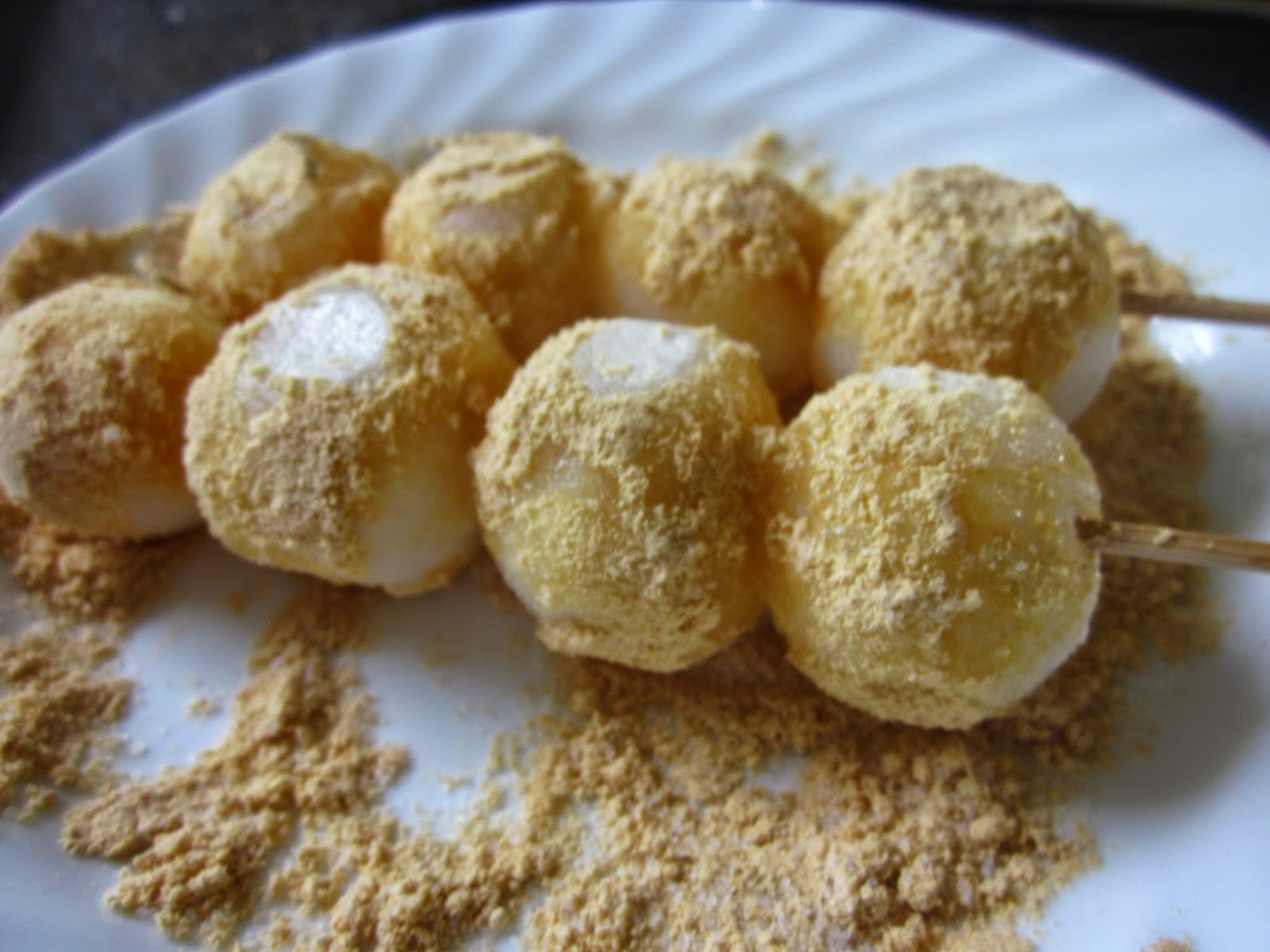 Dango Ingredients:
Dango Ingredients:- 110g joushinko
- 55g shiratamako
- ~140ml of hot tap water (I ended up using more because I heated it up to much in the microwave and added cool water to cool it down)
- A pot of boiling salted water
I almost followed the directions exactly except that I mixed the two flours together then added the water instead of mixing the joushinko with the water then adding the shiratamako. I got ahead of myself. I mixed them together when I was measuring them out then read the directions. Whoops!
The original recipe says it makes 25 dango. However, even though I halved it I still came out with 23, or 22 good sized dango and one smaller dango. I am so glad I halved it, because I don't know what I would have done with all those dumplings.
A few minutes after the dumplings were made, the pot of water came to a rolling boil, so I carefully dropped them in so as not to splash. Once they were done I promptly put them in an ice water bath as per instructions.
Historically, dango are eaten five on a stick. This was because it was said to represent the human body and they were used as offerings to the gods. My dango weren't divisible by five, so two skewers had to hold four dango each. Poor little headless dango, unusable as sacrifices to the gods.
Maki's recipe called for the dango to be grilled, but the idea of using a grill pan made me hesitant, so I used a nonstick pan instead, which I was still hesitant about. I always worry about things sticking to pans no matter what so I turned them often, but that kind of defeated the purpose of them getting dark marks.
While they were "grilling" I made the mitarashi sauce. I thought about halving the recipe for the sauce since I halved the recipe for the dango, but I like my dango with a lot of sauce, so I didn't.

Mitarashi Sauce Ingredients:
- 1/4 c sugar
- 1/2 c water
- 1 Tbs potato starch
- 1/8 cup soy sauce
- 1 Tbs mirin
I failed to mix all the ingredients together before adding heat, so when I put it on the stove and left it to boil the starch became gelatinous on the bottom of the pan and made the sauce lumpy. Also, this recipe has too much soy sauce for my taste. I would rather it be more sweet than soy saucy, so I think I'll either use a different recipe in the future or cut back on the soy sauce in this one.
In the end, I think they came out alright for my first successful attempt. They had a weird aftertaste to me, so I'm not sure if that's just the tap water or the copious amounts of soy sauce. But look at these sexy food porn shots.
 |
| Oooh... |
 |
| So saucy... |
 |
| So glisten-y... |
Because I happened to find it and buy it while at Hana, I also mixed some kinako (toasted soy flour) with sugar and covered the 4-dango skewers with that, something I saw in Cooking with Dog's recipe. I almost preferred the kinako dango over the mitarashi dango. Another favorite topping of mine is anko (red bean paste), but I didn't think about using that as a topping until all the dango were already covered. I guess I'll just have to save it for my in-class presentation. Then they'll be extra abso-foodie-licious!
 |
| Kinako Dango |













